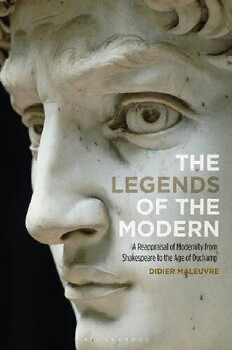
The Legends of the Modern: A Reappraisal of Modernity from Shakespeare to the Age of Duchamp PDF
261 Pages·2020·2.535 MB·English
Most books are stored in the elastic cloud where traffic is expensive. For this reason, we have a limit on daily download.
Preview The Legends of the Modern: A Reappraisal of Modernity from Shakespeare to the Age of Duchamp
Description:
What made art modern? What is modern art? Being a product of modernity, criticism has conventionally approached these questions through a modernist lens, and thereby gives modernity too much sway over its interpretation. This book looks skeptically on the fundamental ideas that shape modern art and literature—ideas such as expressive freedom, originality, creativity, subversion, and spiritual profundity. The aim is to assess the coherence and consequence of these ideas; it is to argue that art became modern not so much by adopting their legendry but in the failure to live up to it. Not the freedom of artistic creation, but the contradictions thereof, indeed the dread of decadence, explain the forms taken by modern art and literature since its origins in the baroque period. Already alive in Michelangelo, Shakespeare, and Cervantes is a modern artist unhappy with the conditions of modernity. These artists bespeak both exhilaration and disappointment with their emboldened sense of creative power. This book argues that disenchantment with art underpins the artistic expression we call romantic and later modernist. Uneasy with modernity, modern and modernist art struggles to throw off the prerogatives it claims to enjoy, and secretly seeks the protections of tradition. As for the politics of modern art and post-art movements, though they appear to be subversive and radical, they really tend toward conservative immunity. One by one, the legends of modernity harbor the opposite of what they seem.
See more
The list of books you might like
Most books are stored in the elastic cloud where traffic is expensive. For this reason, we have a limit on daily download.
